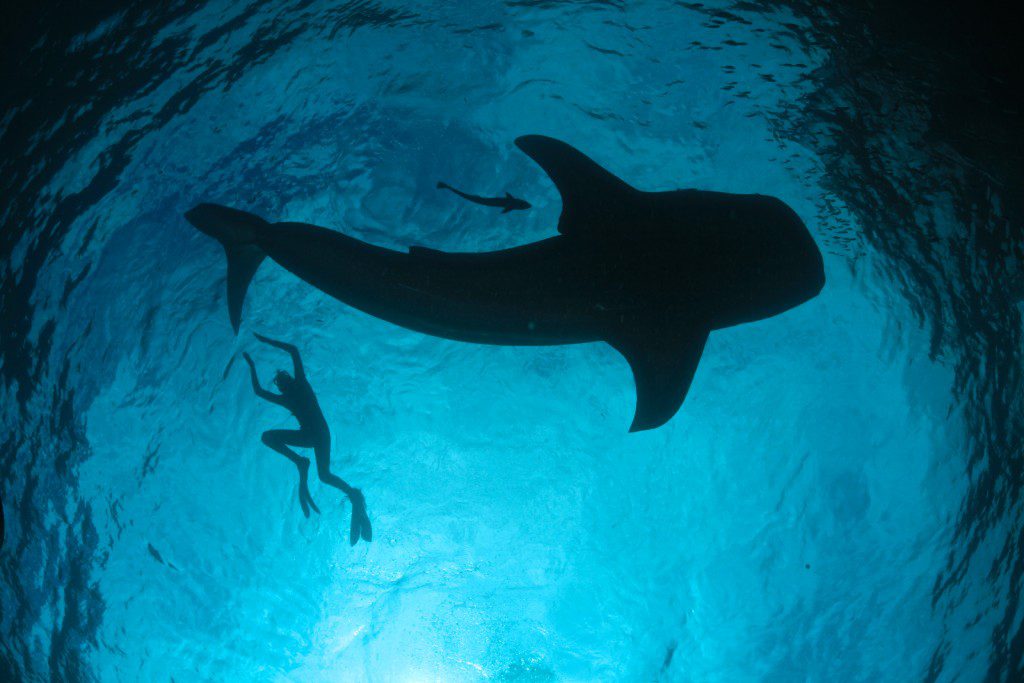Marine Life & Conservation
Announcing the Bird’s Head Seascape Whale Shark ID Database
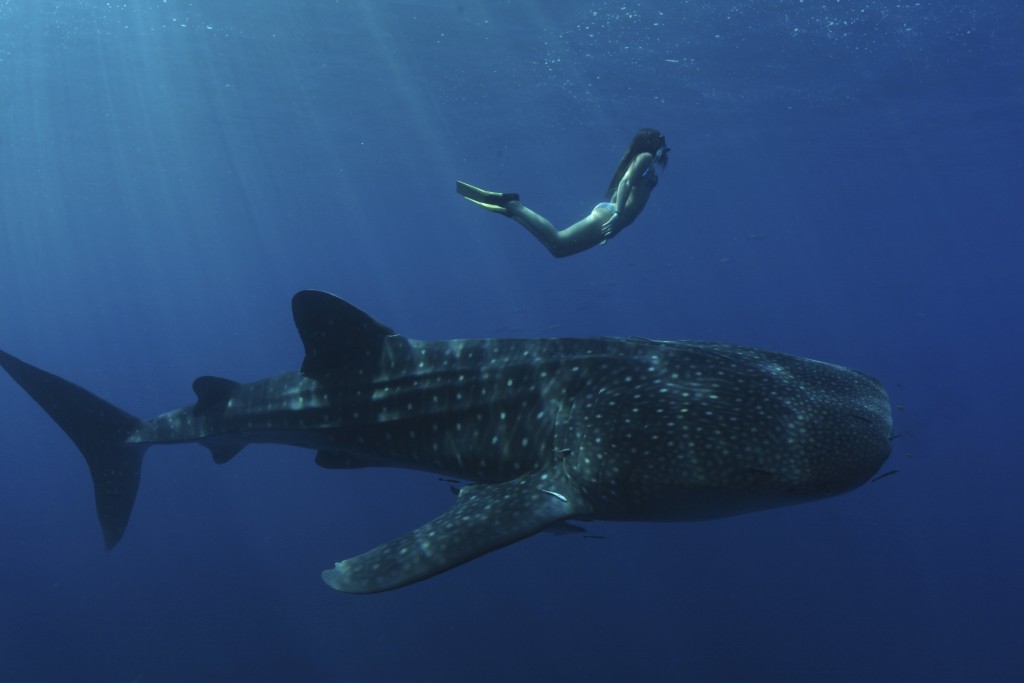
As part of our continuing efforts to make the Bird’s Head Seascape website as useful, interesting and interactive as possible, we are delighted to announce the launch of the BHS Whale Shark ID database! Created as a sister initiative to the BHS Manta ID database, this subroutine within birdsheadseascape.com is designed to allow visitors to browse the database and familiarize themselves with the known individual whale sharks of the Bird’s Head in Indonesia (including information on their size, sex, recognizeable scarring, and their known movements around the Bird’s Head), compare their own ID photos with the database, and help us learn more about BHS whale sharks by submitting photos and observational data directly to the database. This online database represents a fantastic opportunity for “citizen scientists” to contribute to our knowledge about the world’s largest fish – and we strongly encourage you all to get involved!
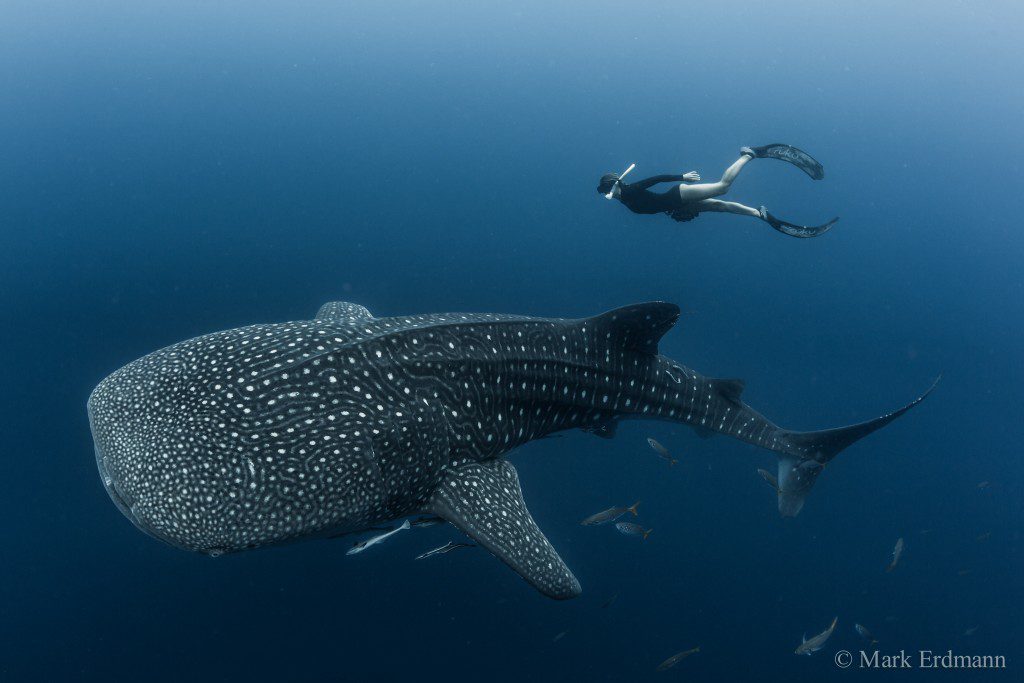
The whale shark Rhincodon typus is the world’s largest fish (reaching up to 18m in length!) and is regularly encountered in both Cendrawasih and Triton Bays in the BHS.
The database is made possible by the fact that all whale sharks have a unique pattern of spots, blotches and streaks on their bodies, and we can use these patterns to identify and track individuals – much like a fingerprint is used to identify individual humans. While these spots and streaks cover the entire body of the whale shark, in order to standardize comparisons of photos, researchers worldwide have agreed to focus photo ID efforts on the left side of individual whale sharks, specifically on the area of the body just behind the gill slits and forward of the dorsal fin. Those wishing to perfect their whale shark photo ID skills should refer to the “How it Works” section of the database, which also explains in detail how to use the site to upload your photo IDs.
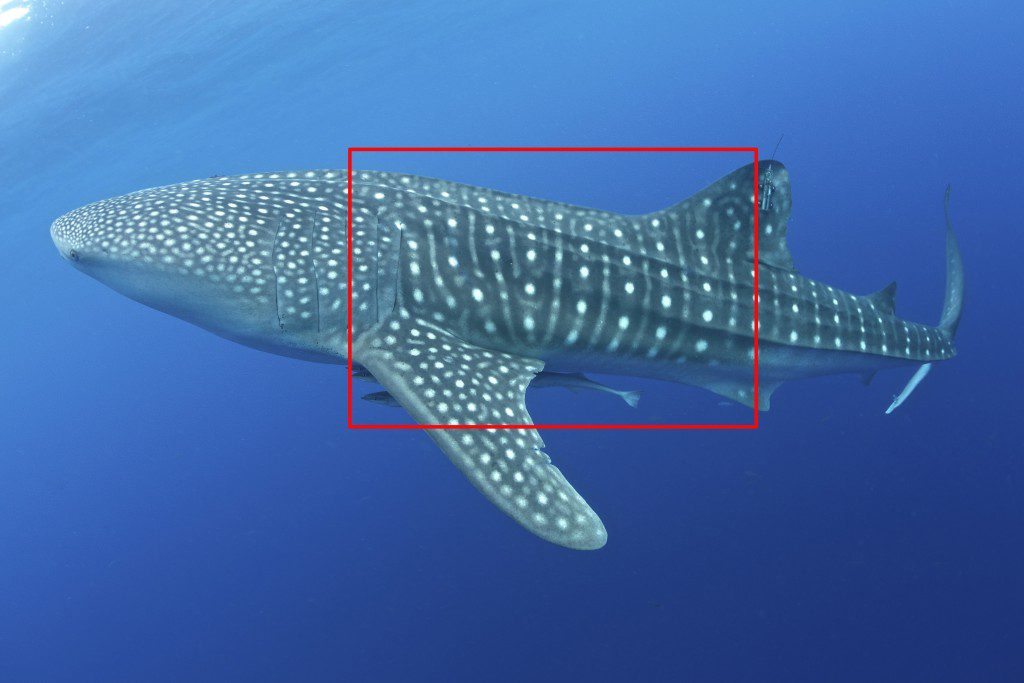
Those wishing to contribute their ID photos to the database should focus efforts on the left side of the animal in the region between the gills slits and the dorsal fin.
Whale shark-focused tourism in the Bird’s Head has been growing since 2009, with liveaboard and resort operators taking advantage of the fact that whale sharks in both Cendrawasih and Triton Bays routinely enjoy feasting on the small baitfish known locally as “ikan puri” – which means they can reliably be found each morning milling about the “bagan” lift net fishing vessels that target their favorite food. Bagan fishers will normally share a few buckets’ worth of their catch with the whale sharks, which ensures the sharks usually stick around the bagans for a few hours – allowing for prolonged tourism interactions with these behemoths.
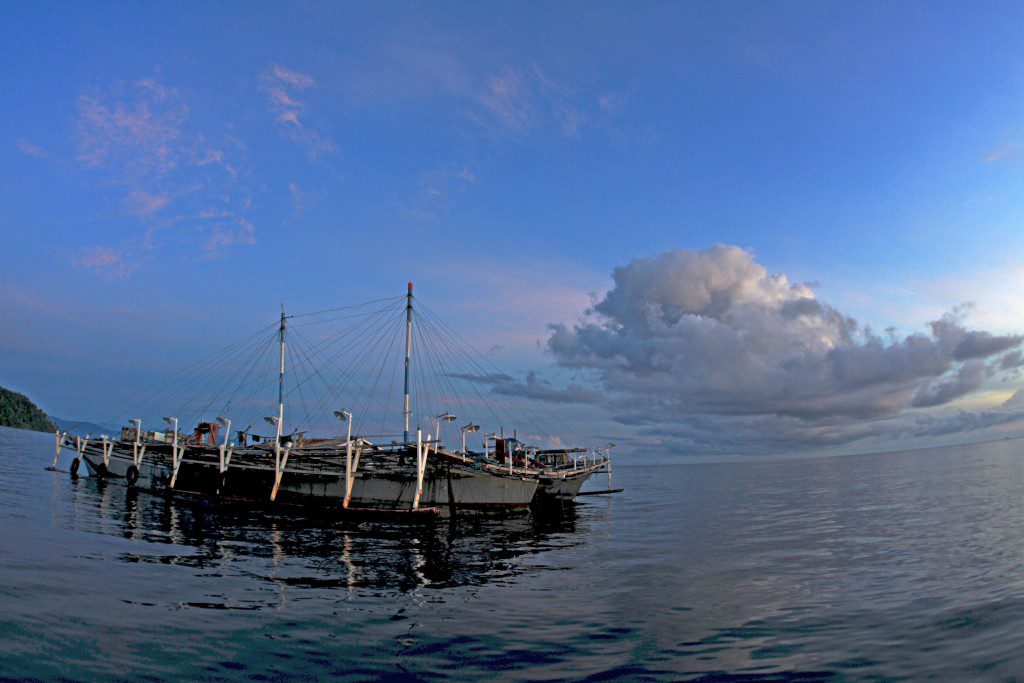
Whale sharks in the BHS are frequently found aggregating around “bagans”, lift net fishing vessels, which target the same small silverside baitfish (known locally as “ikan puri”) that are one of the whale sharks preferred food sources.
In order to better understand the whale sharks of the Bird’s Head, a number of research initiatives have been launched to study these sharks. Since 2009, the Cendrawasih Bay National Park Authority (BBTNTC), WWF-Indonesia and Dr. Brent Stewart of Hubbs Sea World Research Institute (HSWRI) have been compiling a photo ID database of Cendrawasih Bay whale sharks, as well as satellite tagging several individuals. More recently, Conservation International (CI) has been working with the BBTNTC and Ministry of Marine Affairs and Fisheries to attach finmount satellite tags to Cendrawasih whale sharks, while also collaborating with Dr. Hawis Madduppa of the Bogor Agricultural Insitute (IPB) to examine genetic connectivity of whale sharks sampled in Cendrawasih and Triton Bays. CI has also been working with the Kaimana government and local dive operators including Triton Bay Divers to compile a photo ID database of Kaimana whale sharks, and has moreover done some limited satellite tagging in Triton Bay.
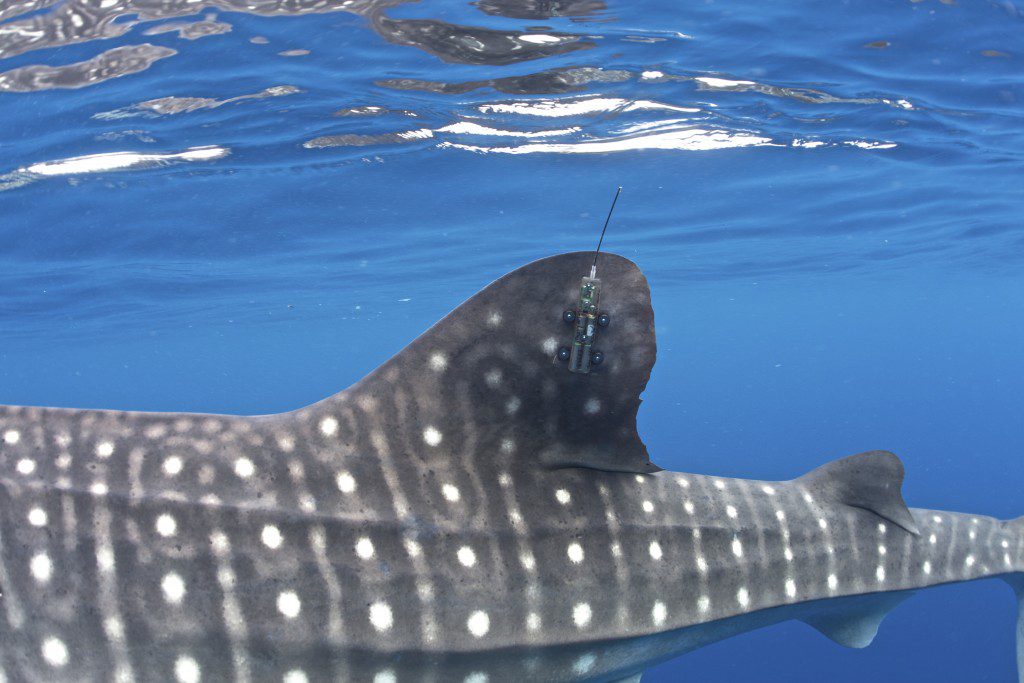
Fifteen of Cendrawasih’s whale sharks now sport finmount satellite tags, allowing conservation scientists to track their movements and learn more about their diving behaviours.
Of all these initiatives, the photo ID database is truly the foundation of all research on Bird’s Head whale sharks. By compiling and continuously updating this photo ID database, we can get an estimate of total population size, better understand seasonal patterns of movement, and determine if there is any “connectivity” between the known populations in Cendrawasih and Triton Bays. And best of all – you can be part of this important research!
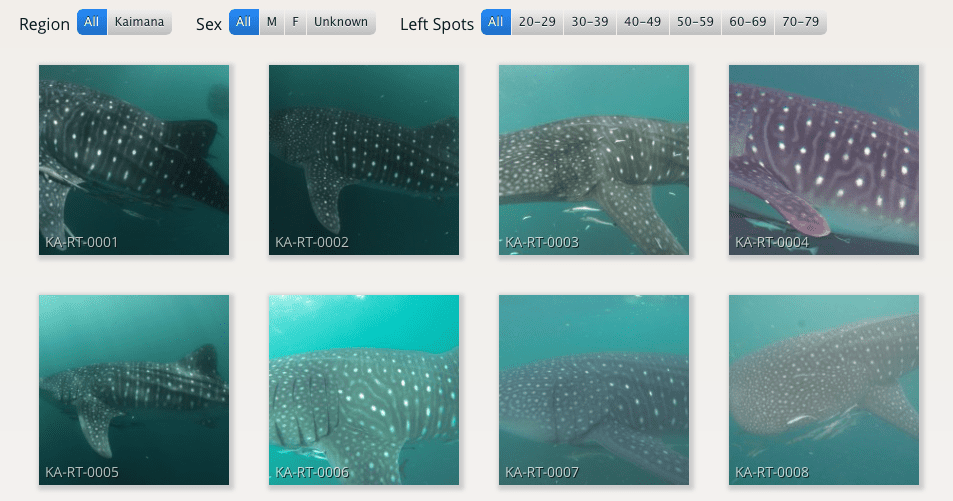
A screenshot from the database showing ID photos of 8 of Kaimana’s 14 known whale sharks (Cendrawasih now has well over 100 documented individuals). Submit your photos and grow the database!
If you’re keen to help, please explore the database and all its features to learn how to take the best possible whale shark identification photos, and submit as many photo IDs as possible! You’ll note we are now launching the Bird’s Head Seascape Whale Shark ID database with the known individuals from the Kaimana/Triton Bay region, though we intend to soon add in individuals from Cendrawasih as well. We encourage viewers to submit photo ID’s from ANYWHERE in the Bird’s Head – as we are particularly keen to investigate if there is movement of individuals around the Bird’s Head, and one of the best ways to do this is to compare photos of individuals taken in different areas. To date, the vast majority of whale shark sightings in the Bird’s Head are from Cendrawasih and Triton Bays, but they are also rarely reported from Raja Ampat, and we also have reports from the northern Bird’s Head (off the leatherback turtle nesting beaches of Abun) and off the FakFak coast. Send in your images and help us “connect the dots” on whale shark movement and behaviour in the Bird’s Head!
For more information about Bird’s head Seascape’s various projects visit www.birdsheadseascape.com.
Marine Life & Conservation
Paul Watson Released as Denmark Blocks Japan’s Extradition Bid

Renowned anti-whaling activist Paul Watson has been released from custody in Greenland after spending five months in detention. Denmark’s Justice Ministry rejected Japan’s request for his extradition, citing insufficient guarantees that his time already served in custody would be credited against any potential sentence.
The 74-year-old Canadian-American was arrested on July 21 in Nuuk, Greenland’s capital, when his ship docked to refuel. His arrest was based on a 2012 Japanese warrant related to a 2010 encounter in Antarctic waters. Japan alleged Watson obstructed operations and caused damage to a whaling research ship during efforts to disrupt illegal whaling. Watson has consistently denied these claims, maintaining his commitment to marine conservation.
Denmark, which oversees extradition matters for Greenland, concluded that while the legal conditions for extradition were met, the lack of assurances from Japan regarding time-served credit made extradition untenable.
In a video shared by his foundation, Watson expressed gratitude and relief, saying, “After five months, it’s good to be out… and good to know they’re not sending me to Japan.” He added that the most difficult part of his time in custody was being separated from his two young sons.
Watson is a pioneering figure in marine conservation, known for founding the Captain Paul Watson Foundation in 2022 after decades of activism with the Sea Shepherd Conservation Society. His bold efforts to defend marine life have earned him widespread support, including from celebrities and conservationists. His work has also been featured in the acclaimed reality TV series Whale Wars.
Watson’s lawyer, Jonas Christoffersen, praised the decision, stating, “We are happy and relieved that Paul Watson is now free.” He added that Watson is eager to reunite with his family and continue his vital work.
The arrest occurred while Watson’s vessel, the M/Y John Paul DeJoria, was en route to the North Pacific with a team of 26 volunteers to intercept a Japanese whaling ship. His foundation described the arrest as politically motivated and emphasized that Watson’s actions were focused on ending illegal whaling practices.
Japan resumed commercial whaling in 2019 after leaving the International Whaling Commission, asserting that whale meat is a cultural tradition. Conservationists, however, continue to challenge these practices, highlighting their impact on marine ecosystems.
Despite the challenges, Watson remains steadfast in his mission to protect marine life and bring attention to whaling practices. His dedication to ocean conservation has made him a globally respected advocate for the environment.
Marine Life & Conservation
12 Days of Zero-Waste Fish-mas

This holiday period, the Marine Conservation Society, the UK’s leading ocean membership charity, invites you to make some simple changes to eating fish this Christmas to help our seas.
Dr Kenneth Bodles, Head of Fisheries and Aquaculture at the Marine Conservation Society, said, “During the festive season, our consumption increases, but so does waste. Sustainability isn’t just about where food comes from – it’s also about how you use it. By reducing waste and making the most out of your seafood, you’re not only taking steps to be more ocean-friendly, but can also help to cut costs during what is often one of the most expensive times of the year”.
The Marine Conservation Society has compiled twelve tips on how to consume seafood sustainably with zero-waste this Christmas:
Buy whole fish instead of fillets
Instead of fillets, consider buying whole fish such as salmon, hake, or lemon sole. By adopting a “nose to tail” approach with cooking, whole-baked fish not only feeds a crowd, but also helps to minimise waste and maximise sustainability by using up every part of the animal, including bones, skin, and fat.
Make fish stock
Leftover fish bones or shells can be put to good use by boiling them to make a nourishing fish stock or bisque. This can be frozen and preserved for later use and makes for a flavourful base in a soup.
Make your own fish pâté
Avoid waste by turning leftover fish, such as smoked mackerel or salmon, into a delicious pâté by blending with cream cheese and lemon. Perfect when paired with crackers.
The sustainability of salmon and mackerel varies depending on where and how it is caught or farmed. For more information on green-rated options, check the charity’s Good Fish Guide.
Buy frozen
By purchasing seafood that is frozen or vacuum-packed, this helps to reduce waste by extending the shelf life of your food.
Fish pie
If you’re wondering what to do with leftover cooked fish, why not opt for a classic fish pie with mashed potatoes, leeks, and a cheesy sauce? A sure crowd pleaser on Boxing Day.
Use the head
Don’t forget the fish head! The meat is incredibly tender and flavourful. The charity recommends a cod’s head curry or recreating Fallow’s renowned cod’s head in siracha butter.
By stretching your ingredients further, not only is this a more sustainable way to enjoy seafood, but also cost-effective by repurposing leftovers and cooking creatively.
Boxing Day brunch
Mix leftover kippers or smoked salmon with scrambled eggs for a tasty, zero-waste, Boxing Day brunch.
For best choice, make sure you buy kippers, or herring, from the North Sea and the North Irish Sea.
Zero-waste storage
A top tip from the Marine Conservation Society to avoid waste is freezing fish offcuts to save for future use.
Crisp up the skin
Even leftover fish skin can be turned into a quick savoury snack by crisping it up in an air fryer with a little olive oil and salt.
Anchovies two ways
Leftover anchovies can either be blended with butter to make a delicious anchovy butter or tossed into pasta for a hit of umami flavour.
The charity recommends opting for anchovies caught in the Bay of Biscay for best choice.
Fishcakes
For an easy, zero-waste meal, leftover seafood trimmings can be mixed with mash and fried in breadcrumbs to make fishcakes.
Pickled mussels
Try pickling mussels in 1:1 vinegar and water, with a dash of sugar for a sustainable, zero-waste snack that can be enjoyed well beyond the festive season.
Mussels farmed in the UK are a seafood superhero. Grown using low-impact methods and harvested by hand, they get all the food they need from the sea around them. This makes them one of the most sustainable, ocean-friendly, and cost-effective seafood options.
Players of People’s Postcode Lottery have raised £6.6M towards the Marine Conservation Society’s vital work in making seafood more sustainable.
Laura Chow, Head of Charities at People’s Postcode Lottery, said: “Fish is a festive favourite for many, but making sustainable choices when it comes to how we buy and eat seafood makes all the difference for our ocean. Support from players of People’s Postcode Lottery has helped the Marine Conservation Society further its sustainable seafood work, so that we can all enjoy healthier, better protected seas.”
The Marine Conservation Society encourages you to make sustainable seafood choices a year-round habit, not just for Christmas. To check how sustainable the seafood on your plate is, you can visit the charity’s Good Fish Guide. The Guide helps consumers and businesses identify the most sustainable seafood using a simple traffic light system, based on where and how species are caught or farmed. Green is the best choice, amber means improvements are needed, and red indicates fish to avoid buying.
Zero-waste gift idea
Why not embrace a zero-waste Christmas by gifting a membership to support marine conservation? It’s a meaningful, low-waste gift that helps protect our ocean for generations to come. Memberships start from as little as £5 a month – the price of a sandwich and drink from your local coffee shop.
Find the latest sustainable seafood advice for wild-caught and farmed seafood on the Good Fish Guide, downloadable to your phone from www.mcsuk.org/goodfishguide.
-

 News2 months ago
News2 months agoIconic SS United States to become the World’s Largest Artificial Reef
-

 News3 months ago
News3 months agoBook Review – 52 Assignments: Underwater Photography
-

 Gear News3 months ago
Gear News3 months agoDYNAMICNORD – New German diving brand enters the British market
-

 News3 months ago
News3 months agoExploring Cenote El Pit: A Diver’s Dream
-

 Gear News3 months ago
Gear News3 months agoTry BARE drysuits (and maybe even win one!) this Friday with Sea & Sea at North West Dive Fest
-

 Marine Life & Conservation3 months ago
Marine Life & Conservation3 months agoBook Review: Coral Triangle Cameos
-

 Blogs2 months ago
Blogs2 months agoDive the Egyptian Red Sea this Autumn with Regaldive
-

 News3 months ago
News3 months ago2024 Ocean Art Underwater Photo Competition Announced


